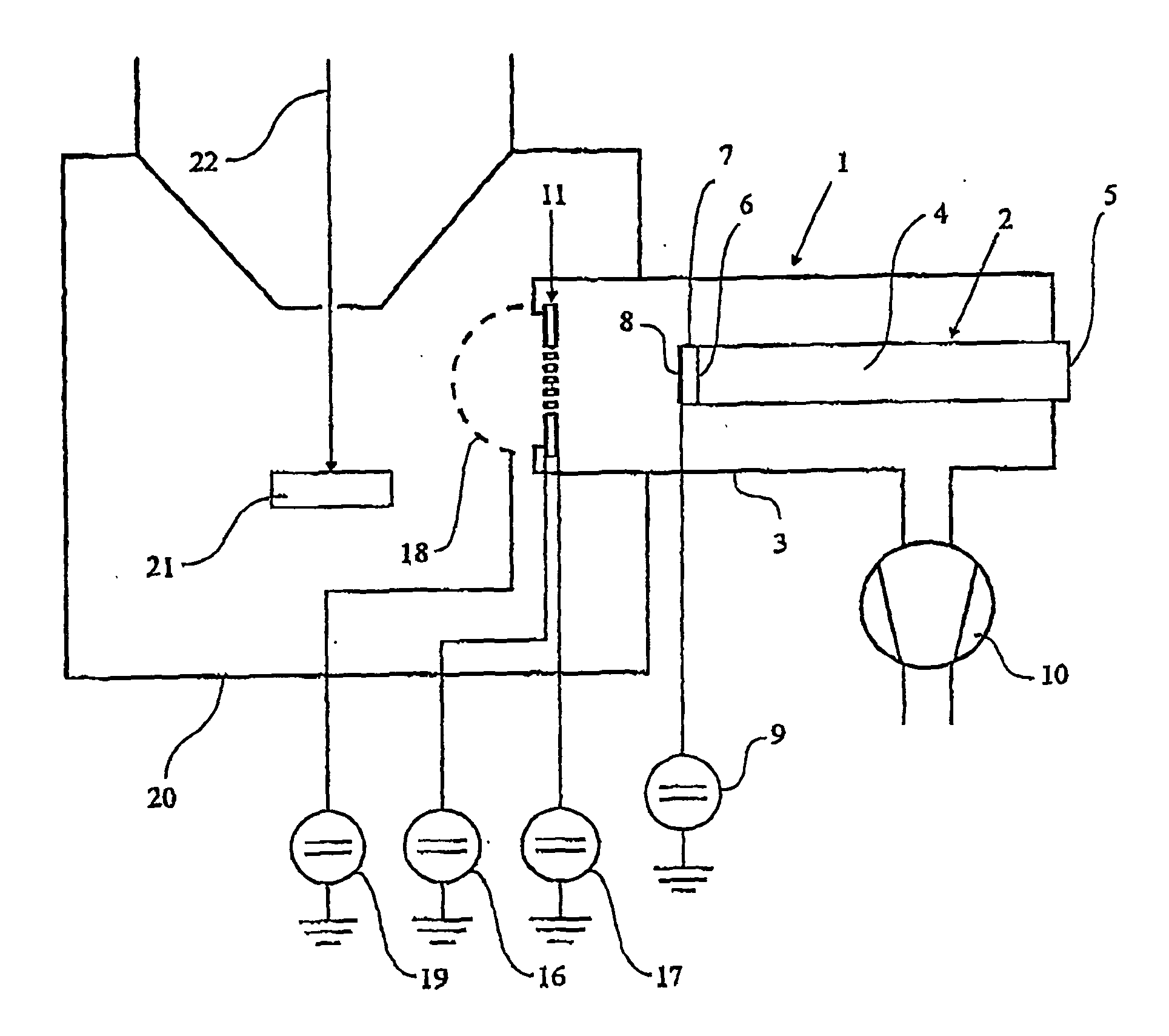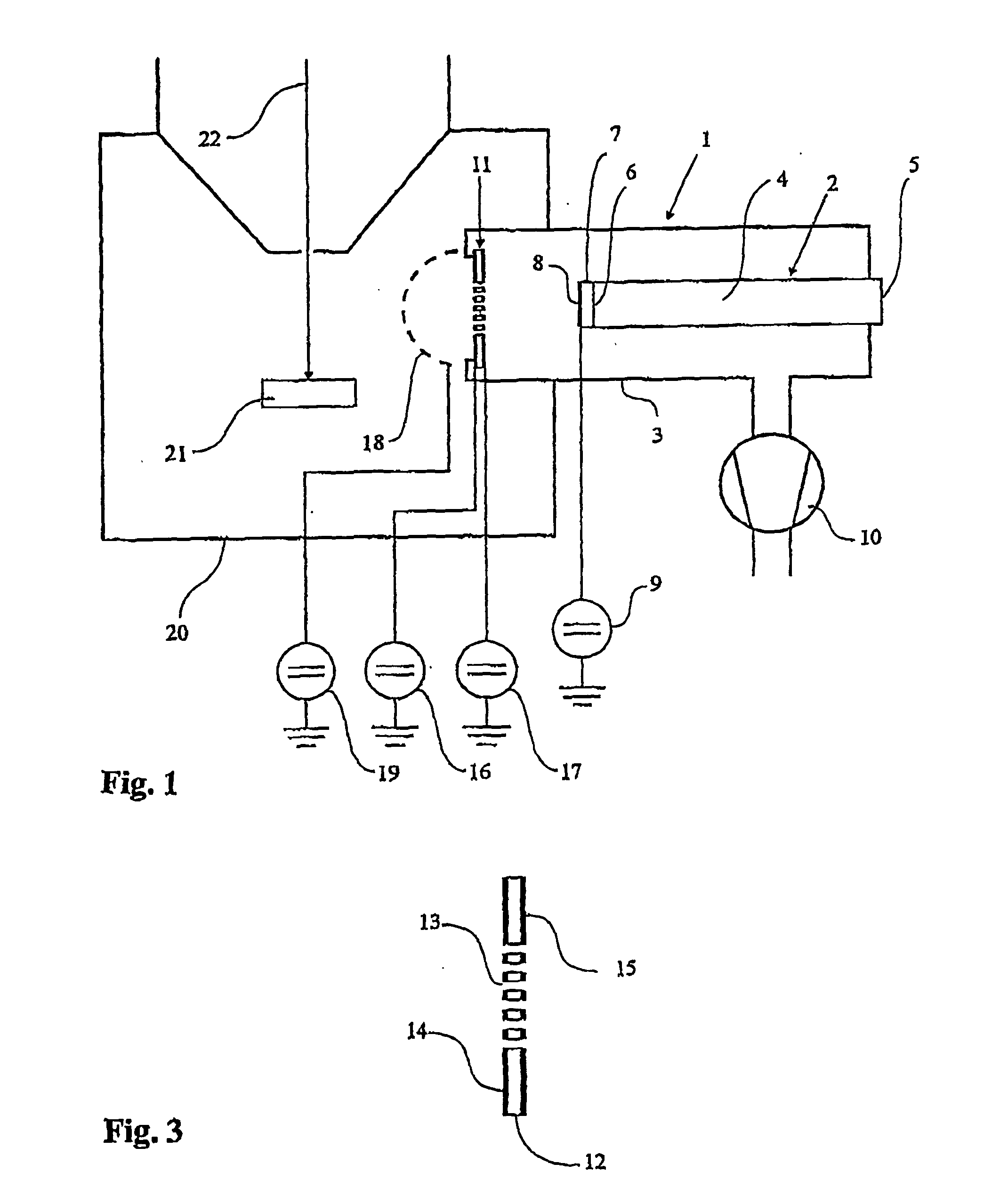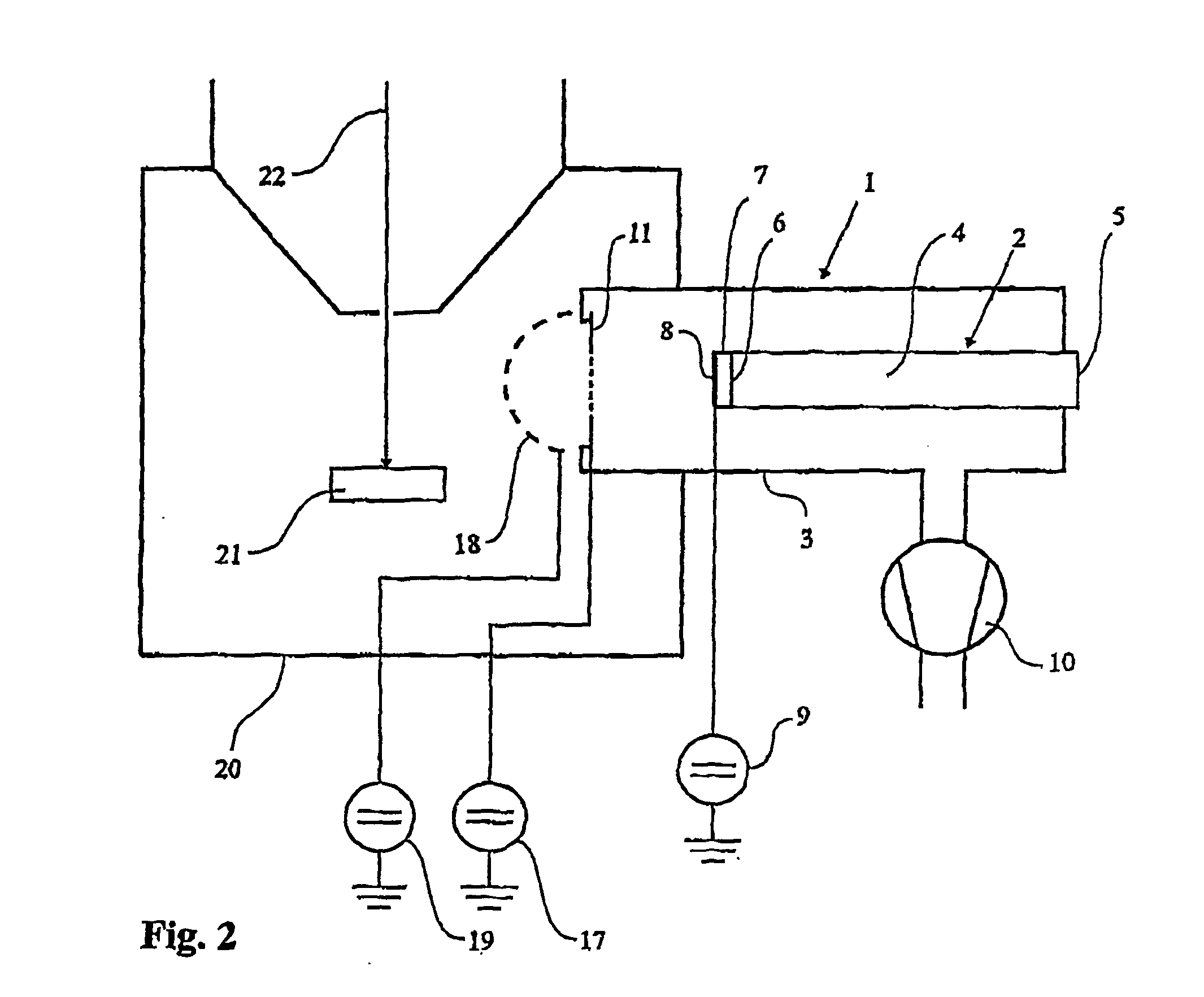Secondary electron detector, especially in a scanning electron microscope
a scanning electron microscope and electron detector technology, applied in the field of scanning electron microscopes, can solve the problems of practically impossible precision microscopy, practically impossible to carry out non-destructive analysis of specimens, and difficult to handle specimens in vacuum
- Summary
- Abstract
- Description
- Claims
- Application Information
AI Technical Summary
Problems solved by technology
Method used
Image
Examples
Embodiment Construction
[0024]FIG. 1 shows the first exemplified embodiment of the secondary electron detector according to the present invention. The secondary electrons detector 1 consists of the sensor 2 located in the chamber 3 of the detector. The sensor 2 consists of the light guide 4 to whose output 5 the photo-multiplier (not shown) is connected and to whose output 6 the scintillator 7 is connected, whose surface is coated, while to the coating 8 of the scintillator 7 the high voltage source 9 is connected. To the detector chamber 3 vacuum air pump 10 is connected to create vacuum inside the detector chamber 3. The wall of the detector chamber 3 near to the scintillator 7 is enclosed by an electrically conductive grid 11 constructed from diaphragm 12, in the given embodiment of capton, with orifices 13 and fitted on both sides with conducting coatings 14 and 15. The configuration of capton diaphragm 12 is shown in detail in FIG. 3. To both conducting coatings 14, 15 voltage sources 16, 17 are conne...
PUM
| Property | Measurement | Unit |
|---|---|---|
| bias voltage | aaaaa | aaaaa |
| voltage | aaaaa | aaaaa |
| voltage | aaaaa | aaaaa |
Abstract
Description
Claims
Application Information
 Login to View More
Login to View More - R&D
- Intellectual Property
- Life Sciences
- Materials
- Tech Scout
- Unparalleled Data Quality
- Higher Quality Content
- 60% Fewer Hallucinations
Browse by: Latest US Patents, China's latest patents, Technical Efficacy Thesaurus, Application Domain, Technology Topic, Popular Technical Reports.
© 2025 PatSnap. All rights reserved.Legal|Privacy policy|Modern Slavery Act Transparency Statement|Sitemap|About US| Contact US: help@patsnap.com



